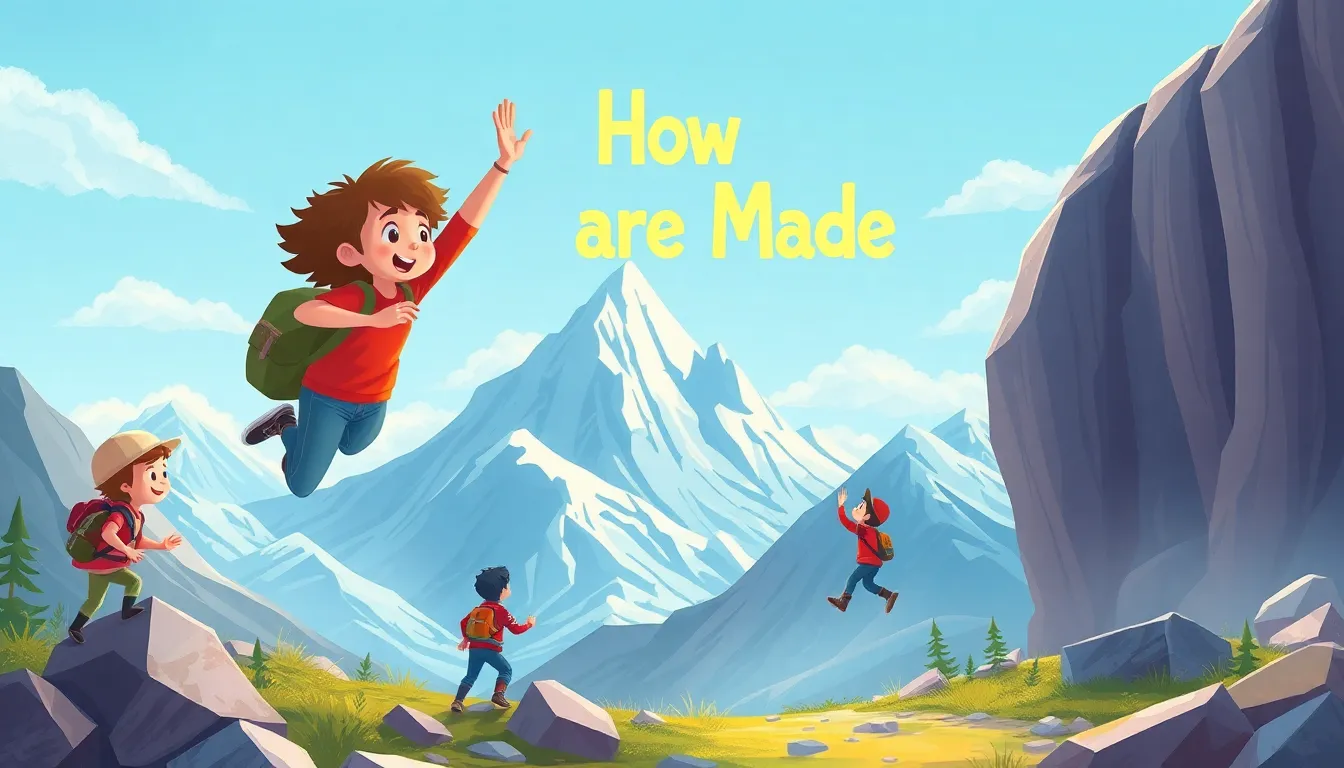
🌄 How Mountains Are Made
Introduction
Mountains aren’t just big piles of rocks—they’re nature’s skyscrapers, built over millions of years by powerful forces deep inside the Earth. In this adventure we’ll learn the vocabulary, discover why mountains rise, see real‑world examples, and even try a tiny experiment at home!
1. the Earth’s Moving Puzzle Pieces – Tectonic Plates
The planet’s outer shell is broken into huge slabs called Tectonic Plates. These plates float on the hot, semi‑liquid layer called the Mantle. When plates Collide, Pull Apart, or Slide Past Each Other, the ground above them can bend, crack, or be pushed upward.
- Collision (Convergent) – Two plates smash together. The crust thickens and folds, lifting rock into a mountain range.
- Pull‑apart (Divergent) – Plates move away, and magma rises to fill the gap, creating volcanic mountains.
Did You Know? The Himalayas, home to Mount Everest, are still growing because the Indian plate is still pushing into the Asian plate!
2. Folding, Faulting, and Uplift
When plates collide, the rock layers don’t just stay flat—they Fold like a blanket pushed from both ends. A Fold can create a gentle hill or a sharp ridge. Sometimes the rock cracks and slides along a Fault, lifting one side higher than the other. This upward movement is called Uplift.
Example: The Rocky Mountains in North America were formed by folding and faulting when the Pacific plate slid under the North American plate.
3. Volcanic Mountains – Igneous Power
Not all mountains are made by squeezing rocks together. Some are built when molten rock, called Magma, erupts from inside the Earth and cools into solid Igneous rock. Repeated eruptions pile up lava and ash, forming a volcano.
Example: Mount Fuji in Japan is a classic volcanic mountain—its smooth cone grew layer by layer from countless eruptions.
4. Shaping the Peaks – Erosion
Even after a mountain is born, wind, water, ice, and gravity Erode (wear away) its sides. Rivers carve valleys, glaciers scrape the sides, and rain smooths the surface. Erosion is why mountains look different over time.
Did you know? The Grand Canyon started as a river that cut through uplifted rock millions of years ago!
Mini Experiment: “make Your Own Folded Mountain”
What You Need
- A piece of modeling clay (any color)
- A flat board or tray
- A ruler (optional)
Steps
- Roll the clay into a long, thin “rock layer” about 1 cm thick.
- Place the layer on the board.
- Gently push the ends of the clay toward each other. Watch the middle Fold upward, forming a tiny “mountain.”
- Use the ruler to measure how high the peak gets.
What It Shows
- The pressure from colliding plates makes the crust Fold and Uplift.
- The harder the clay (representing older, stronger rock), the less it bends, just like real mountains!
Quiz Time
| Question | Answer |
|---|---|
| 1. What are the giant slabs of Earth’s crust called? | Tectonic plates |
| 2. Which process makes a volcano grow taller? | Repeated eruptions of magma (igneous rock) |
| 3. What word means “wearing away by wind or water”? | Erosion |
| 4. When two plates push together, the rock can Fold or Fault.